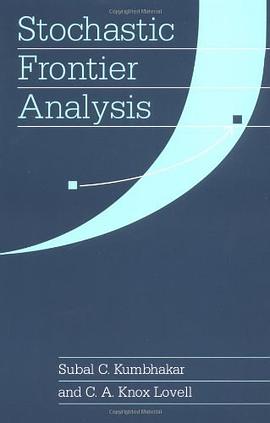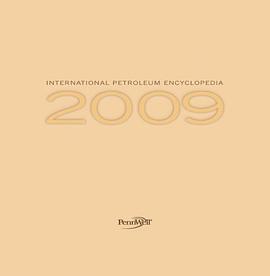

Preface
Transportation sustains economic and social activity and is central to operations research and management science. When operations research emerged as a structured field during World War II, some of the first problems investigated arose from the need to optimize military logistics and transportation activities. After the war ended, the scope of operations research applications broadened but transportation problems always occupied a central place. It is now widely recognized that some of the most successful applications of operations research are encountered in transportation, most significantly in the airline industry where it underlies almost every aspect of strategic, tactical and operational planning. This success story may be explained by a number of factors, the first being the economic importance of transportation. Also, the complexity and large scale of transportation problems call for powerful analytical techniques, and the high volumes involved imply that substantial savings can often be achieved through the use of optimization. Furthermore, transportation problems are highly structured, making them amenable to the use of efficient solution methods based on network optimization techniques and mathematical programming.
This book contains eleven chapters describing some of the most recent methodological operations research developments in transportation. It is structured around the main transportation modes, and each chapter is written by a group of well-recognized researchers. Because of the major impact of operations research methods in the field of air transportation over the past forty years, it is befitting to open the book with a chapter on airline operations management. While many past publications have focused on airline strategic and tactical planning, Ball, Barnhart, Nemhauser and Odoni have chosen to address the organization and control of recovery operations in the event of disturbances. This line of research is relatively new and of major importance to the airline industry. The second chapter, by Desaulniers and Hickman, surveys the planning of public transit operations. The problems addressed and the methods employed in transit planning, for example those arising in network design, passenger assignment, scheduling, and fleet and crew assignment, are often similar to those of the airlines. The railway optimization chapter, by Caprara, Kroon, Monaci, Peeters and Toth, covers the realm of planning problems encountered in railway planning, with an emphasis on European passenger railways. Again, several of these issues are similar to those observed in other modes, but some problems are specific to the railway industry, such as train platforming, rolling stock circulation, and train unit shunting. The fourth chapter, by Christiansen, Fagerholt, Nygreen and Ronen, contains an extensive survey of maritime transportation problems, methods and applications. Compared with other modes, maritime transportation has received relatively little attention from operations researchers. Yet this field is rapidly expanding with the consolidation of major shipping companies and the development of large container ports.
The next three chapters cover a variety of planning problems arising in vehicle fleet management. The chapter by Powell, Bouzaiene-Ayari and Simao addresses truck transportation planning in contexts where information processes are dynamic. The focus is on the development of models that capture the flow of information and decisions. The vehicle routing chapter, by Cordeau, Laporte, Savelsbergh and Vigo, concerns what is arguably the most central problem in distribution management. It surveys several families of vehicle routing problems, including classical models, inventory routing, and stochastic routing. In the transportation on demand chapter, Cordeau, Laporte, Potvin and Savelsbergh consider the planning of pickup and delivery operations made at the request of users, such as those encountered in courier services, dial-a-ride operations, dial-a-flight systems, and ambulance fleet deployment.
The eighth chapter, by Crainic and Kim, is devoted to intermodal transportation and ties in some planning issues encountered in railway, maritime, and trucking operations. This chapter describes methodologies relevant to the solution of system design and operations planning problems from the perspective of a carrier, or from that of an intermodal transfer facility operator. It also addresses problems encountered at the regional or national level. The next chapter, by Erkut, Tjandra and Verter, concerns the transportation of hazardous materials and includes a broad description of the issues encountered in this field, as well as methodological contributions on risk assessment, routing and scheduling, and facility location.
The last two chapters of the book cover the area of automobile transportation. Marcotte and Patriksson first survey the broad field of traffic equilibrium. Their chapter contains a rich account of the main equilibrium concepts, as well as subproblems and mathematical algorithms encountered in this area. This chapter provides an informative bibliographical note at the end of each section. Finally, in the last chapter, Papageorgiou, Ben-Akiva, Bottom, Bovy, Hoogendoorn, Hounsell, Kotsialos and McDonald summarize some of the most important issues and recent developments encountered in ITS and traffic management. These include traffic flow models, route guidance and information systems, as well as urban and highway traffic control.
We are confident that this book will prove useful to researchers, students, and practitioners in transportation, and we hope it will stimulate further research in this rich and fascinating area. We are grateful to Jan Karel Lenstra and George L. Nemhauser who invited us to edit this volume. While the process took longer than we had expected, we found the experience highly rewarding. Our deep thanks go to all authors for the quality of their contributions, to the anonymous referees for their time, effort, and valuable suggestions, and to Gerard Wanrooy of Elsevier for his support.
Cynthia Barnhart, Massachusetts Institute of Technology
Gilbert Laporte, HEC Montréal
*Volume 14 examines transport and its relationship with operations and management science
*11 chapters cover the most recent research developments in transportation
*Focuses on main transportation modes-air travel, automobile, public transit, maritime transport, and more
具体描述
读后感
评分
评分
评分
评分
用户评价
相关图书
本站所有内容均为互联网搜索引擎提供的公开搜索信息,本站不存储任何数据与内容,任何内容与数据均与本站无关,如有需要请联系相关搜索引擎包括但不限于百度,google,bing,sogou 等
© 2025 book.wenda123.org All Rights Reserved. 图书目录大全 版权所有




















